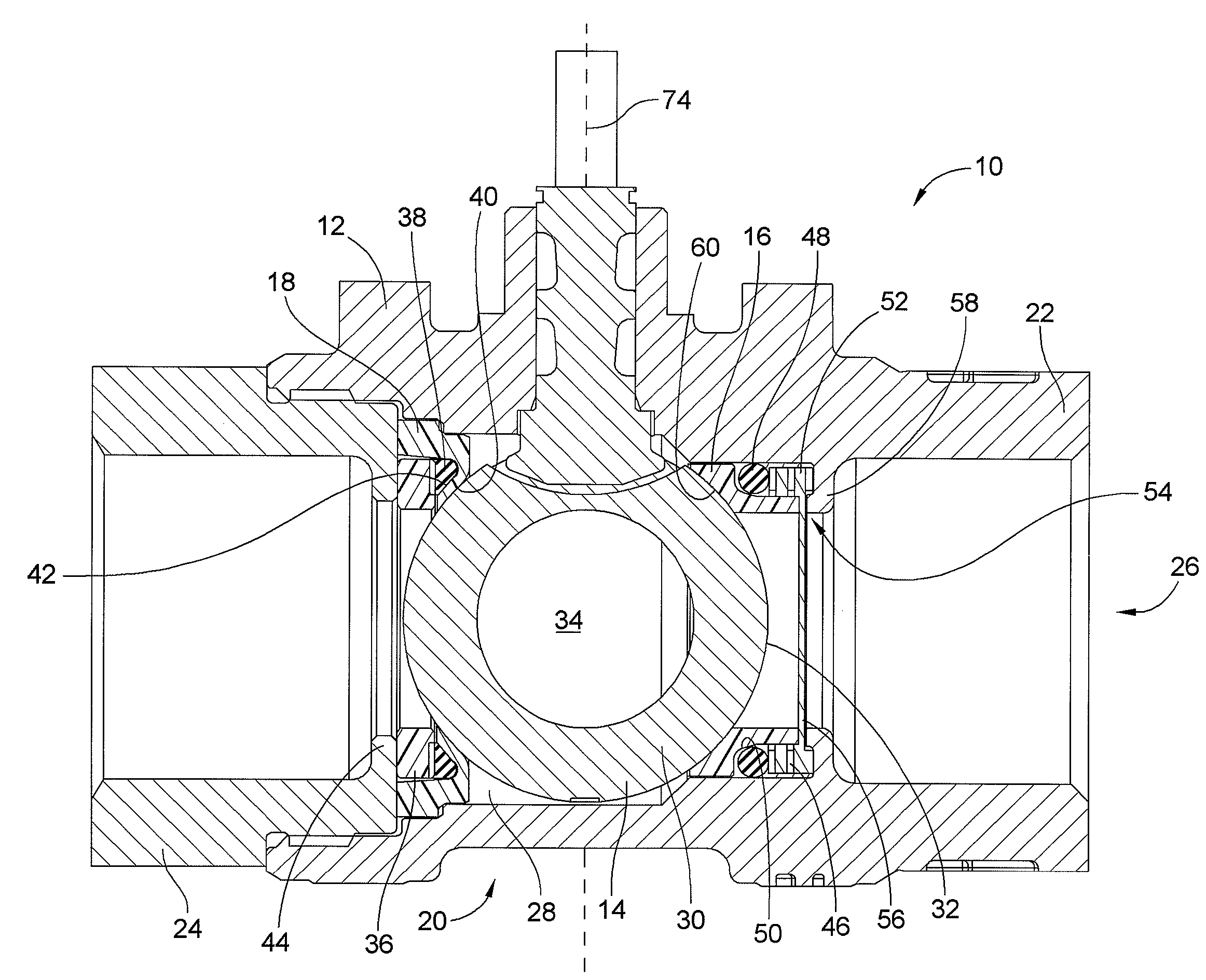Low torque ball valve with dynamic sealing
a ball valve and low-torque technology, applied in the field of ball valves, can solve the problems of low-torque ball valves, high dynamic friction, and high compression force against downstream seals, and achieve the effect of reducing torqu
- Summary
- Abstract
- Description
- Claims
- Application Information
AI Technical Summary
Benefits of technology
Problems solved by technology
Method used
Image
Examples
Embodiment Construction
[0022]FIG. 1 shows a first exemplary embodiment of a ball valve 10, according to the invention. The ball valve 10 includes a valve body 12, and a valve member 14 operatively connected to the valve body 12 by an upstream and a downstream seal 16, 18.
[0023]The valve body 12 includes a central section 20, an upstream flow-through end 22, and a downstream flow-through end 24. The upstream and downstream flow-through ends 22, 24 are threadably joined to the central section 20, to form the valve body 12, and defines a flow passage 26 having an inlet formed by the upstream flow-through end 22, an outlet formed by the downstream flow-through end 24, and a valve receiving chamber 28 disposed between the upstream and downstream flow-through ends 22, 24.
[0024]The valve member 14 of the exemplary embodiment has an outer wall 30 defining a generally spherical shaped outer surface 32, and includes a throughbore 34 therein. The valve member 14 is disposed within the valve receiving chamber 28 of t...
PUM
 Login to View More
Login to View More Abstract
Description
Claims
Application Information
 Login to View More
Login to View More - R&D
- Intellectual Property
- Life Sciences
- Materials
- Tech Scout
- Unparalleled Data Quality
- Higher Quality Content
- 60% Fewer Hallucinations
Browse by: Latest US Patents, China's latest patents, Technical Efficacy Thesaurus, Application Domain, Technology Topic, Popular Technical Reports.
© 2025 PatSnap. All rights reserved.Legal|Privacy policy|Modern Slavery Act Transparency Statement|Sitemap|About US| Contact US: help@patsnap.com


